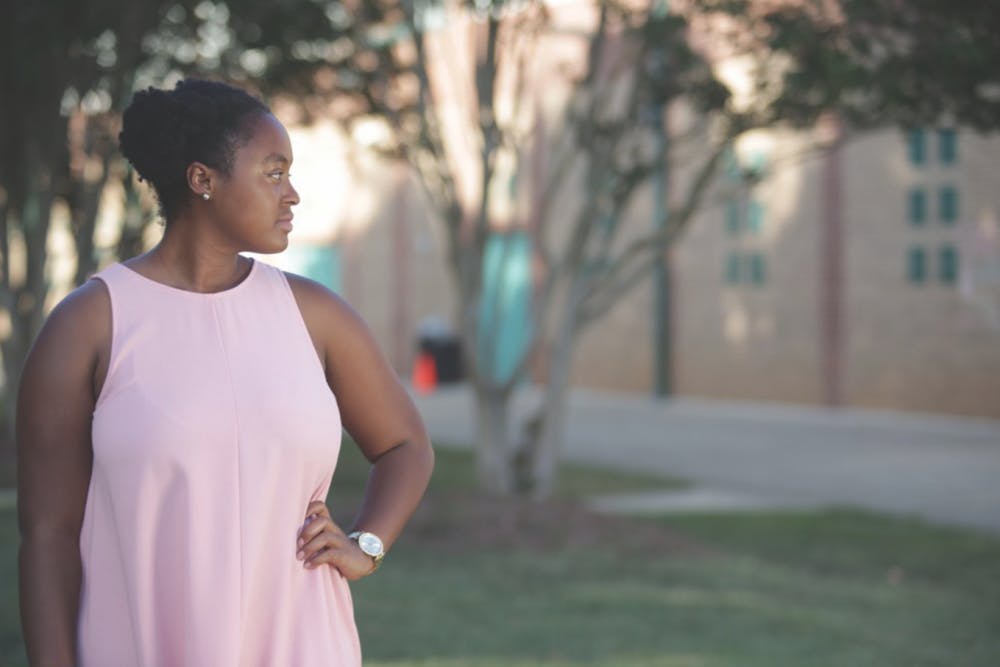Nash said the system has an equity team working on strategies to address the achievement gap. The CHCCS equity plan, Excellence Equals Equity, addresses gaps based on race, ethnicity, socioeconomic and other factors.
"Equity requires a shift from traditional education, where all students receive identical support regardless of needs," the forward of the plan reads. "And a shift towards implementing core strategies that ensure ALL students are able to reach their full potential.”
“The main point is that with an achievement gap like this, you’re really seeing a school within a school,” Erika Wilson, a professor in the UNC School of Law, said. “If you have some students that are taking classes that are less rigorous and some taking classes that are not, you’re seeing two different levels of education.”
These disparities are often compounded by socioeconomic factors, Wilson said. The Stanford CEPA study showed strong correlations between achievement gaps and parental education levels, single parenthood and racial or ethnic differences in income.
“In college towns like Chapel Hill or Berkeley, you have white students that might be the sons and daughters of professors and black or Hispanic students that might be the sons and daughters of working class people,” she said.
Hango, who attended East Chapel Hill High School, said students start on their paths early.
“Before (Rashkis Elementary School), I actually went to a Montessori school,” Hango said. “I think that definitely contributed to me being curious and wanting to succeed in school and being interested in the things I was learning.”
Wilson said pre-K programs and other factors from before students enter the school system are important, and some of these factors are tied to socioeconomic status.
“Parents that are working a lot and don’t have a lot of time to spend with their children and check their homework are more likely to be on the wrong end of the gap," Wilson said.
Laura Duque, a UNC junior who moved to the United States from Colombia at the age of 10, said the gap became more evident in high school.
“My junior year of high school I took AP classes, and there were maybe three Latinx students in the class and one of them was me,” Duque said. “I can only speak for my experience, but I felt isolated and I felt like there weren’t resources for me."
Duque and her parents came to the United States under student visas so her parents could pursue master’s degrees.
To get the day's news and headlines in your inbox each morning, sign up for our email newsletters.
“When I came into high school I wasn’t thinking about taking AP courses or honors classes because no one told me about it,” she said. “Thankfully I was friends with a group of girls that were all children of immigrants who were from the area, either students at Duke or UNC.”
Duque, who went to East Chapel Hill, didn't speak English when she moved. She was at a kindergarten reading level when she started fourth grade.
“That was challenging, and I think it happens to a lot of kids who immigrate here,” she said. “They have to learn the language and they aren’t given the support they need and they’re just expected to fall in and go with the flow.”
Hango is on the executive board for Helping Youth by Providing Enrichment through the Campus Y. The group aims to raise awareness among UNC students about educational disparities in the area by establishing tutoring and mentoring programs at local community centers mainly for minority students, Hango said.
She said her parents were able to provide the resources for her education.
“If I can be that person for another kid that maybe doesn’t have the resources to be exposed to those same things, then I can maybe help them get on the right path a little bit earlier, or help them find something they’re interested in and hope that that passion continues,” Hango said.
Duque said small disparities within the education system can add up. Access to computers outside of school, consistent transportation and money for tutoring or sports are not available to all students, even though certain aspects of schooling require them.
“There are certain biases rooted in the education system,” she said. “Education wasn’t designed for folks that look like me, it just wasn’t.”
@OlivinOnAPrayer
state@dailytarheel.com



